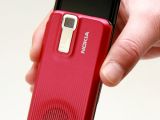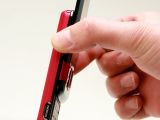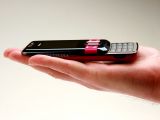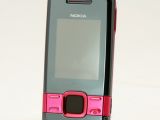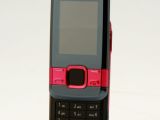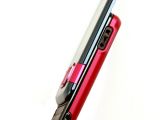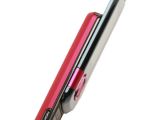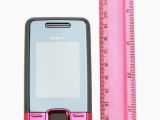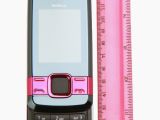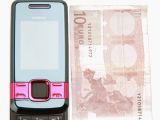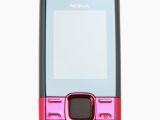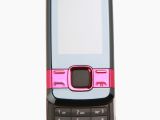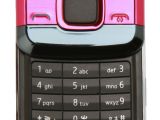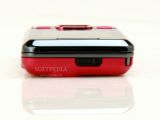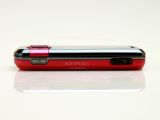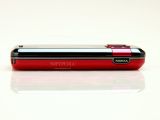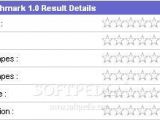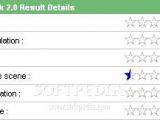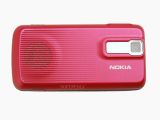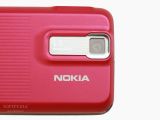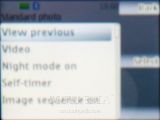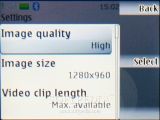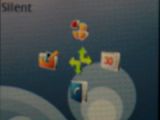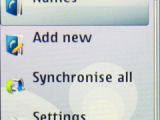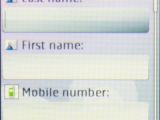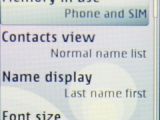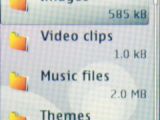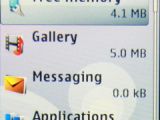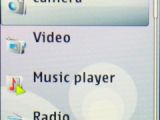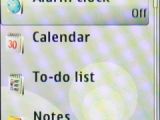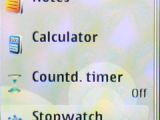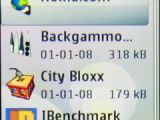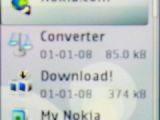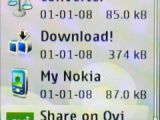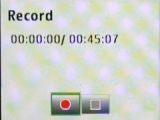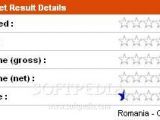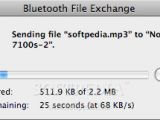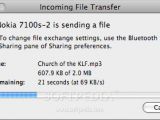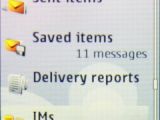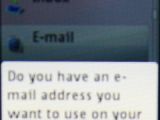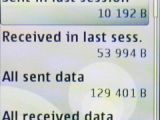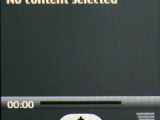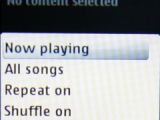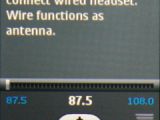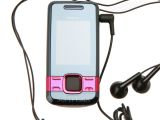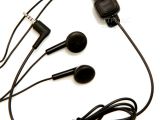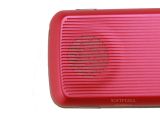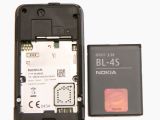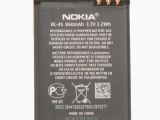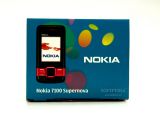Nokia 7100 adds to the Supernova series as an entry-level handset but promises excellent value for money. Targeting emerging markets, the cheap device is intended to attract buyers that are not interested in high-end features or simply don't have the budget to get themselves a much better mobile phone. Even though it is considered an entry-level handset, you will still have to pay a price that cannot be considered 'entry-level', especially on those emerging markets. Nokia 7100 Supernova offers you a way to communicate, limited Internet browsing and poor multimedia features.
Announced in November 2008, Nokia 7100 Supernova was made available on the market in January 2009. The handset can be acquired for about US$100, without any plan, but prices may vary by location and carrier, so chances are that you'll even get it for up to US$150. The phone is available in three different colors: Jelly red, Fresh blue and Black.
Design
Nokia 7100 Supernova features a basic slide form, pretty slim and small. Even though it’s a low-end phone, the slider doesn't seem so cheap at first glance. The plastic used for manufacturing is very well polished and shiny, while the back cover is ridgy, and it’s also the only drawback I have found in the construction of the phone, as it seems flimsy and it gives the impression that it's on the verge of falling down. The back cover is held by a weird switch on top of the phone, which is the only thing that prevents it from falling. On the right side of the slider there's a dedicated camera button, a charge port, a 2.5mm jack port and a weird USB port.
On the bottom side there's a small mic gap, while on the back of the phone one can notice a large loudspeaker and a 1.3 Megapixel camera. The 2-inch display is protected against scratches by a thin plastic glass. Below the small screen there's a large D-pad controller and 4 contextual keys: Accept and Reject calls, and 2 soft keys. Sliding up the phone reveals a common keypad, very comfortable for texting and pretty responsive. Backlighting is strong and even on the whole keypad, so you can text in dark environments with no worries. For its size (98 x 48.4 x 15mm), Nokia 7100 Supernova appears to be a little bit heavier than expected (103.5g including battery), which seems strange as the whole phone is actually made of plastic, which shouldn't be that heavy. One thing that surprised me was the fact that the shiny plastic is not a fingerprint magnet. The sliding mechanism seems to have been solidly built and works flawlessly. The phone is well balanced and pocket-sized, which are some of the most important traits a low-budget handset needs to possess. Another one should be the sturdiness of the build, but Nokia 7100 Supernova fails to meet this requirement. Basically, if you drop it there’s a high chance to break its casing. Overall, Nokia 7100 will definitely stand out from the crowd, as long as you compare it with other entry- and mid-level phones.Display and Camera
Nokia 7100 Supernova features a small 2-inch TFT display, supporting 65k colors and a 240x320 pixel resolution. Besides its small size, I had trouble trying to distinguish something on the screen when outdoors in strong light. Sadly, the quality of the image displayed is well under the standards that Nokia usually offers to its customers. Browsing on such a small screen, almost unreadable in the sunlight, is another big issue with the handset.
The 1.3 Megapixel camera lacks auto-focus and flash capabilities, but at least it can record videos. The maximum resolution available is 1280x1024 pixels for pictures and 128x96 pixels for movies (7 fps). Unfortunately, you won't be able to record too much as the phone features limited storage space and no slot card for memory expansion. The camera interface is basic with none of the usual settings such as Effects or White Balance. Instead you get Self-timer and Sounds. The camera lens is protected by the metallic plate that surrounds it, as well as the thin plastic that covers it. The quality of the picture is below average, but at least the time for saving a picture has been lowered compared to its 7210 Supernova predecessor. Taking pictures with this phone doesn't seem to be a good idea, unless you're satisfied with such a low quality. The 1.3 Megapixel camera is definitely not among the best of its kind, on the contrary. Check out the samples below to see what I mean.Menu and Software
Nokia 7100 Supernova classic runs on an S40 5th Edition interface with Feature Pack 1, which is the latest user-interface coming from Nokia. If you owned a Nokia handset before and it didn't have a Symbian OS, then this slider will probably feel the same. One of the most user-friendly interfaces on the market, the S40 seems unchanged on the surface, and offers the Nokia 7310 Supernova user an excellent experience. The phone's firmware includes Flash 3.0, animated menus, submenus and icons.
Nokia's Series 40 5th Edition UI allows you to experience streaming videos, image rendering, mobile 3D graphics and scalable 2D Vector graphics. It also supports the latest version of Adobe's Flash Lite 2.1, the interoperable platform that enables the accelerated development and delivery of rich graphical mobile content, and includes audio file playback and streaming capabilities that provide audio and music enhancements to mobile gaming and multimedia experience. The handset also includes some useful applications, such as Alarm clock, Calendar, To-do list, Notes, Calculator, Countdown timer and Stopwatch. The menu is fully customizable and you can designate any MP3, MIDI or AAC file as ringtone. Nokia's integrated browser has trouble opening websites with rich image content, so I suggest using Opera Mini, which is also included. The phonebook can store up to 1,000 contacts, and each can be filled with up to two different phone numbers. The fonts can be customized, but only those displayed when opening Contacts, Web browser and messaging sections. Also, some Java games come preinstalled – Backgammon, City Bloxx, Rayman – Raving Rabbids and Snake III. The handset is compatible with Java MIDP 2.1 applications, but there is a limit to the size of any app that you might want to install on the phone – 512 KB. This might be the case for most Java-compatible applications, but I noticed that I could run some files that were around 1MB in size. Nevertheless, not all Java apps will work on this mid-end device, so you might want to try that out for yourselves.Communications
Nokia 7100 Supernova is fully compatible with GPRS and EDGE Class 10 but, as benchmarks revealed, it attained below-average scores in terms of data transfer speed (EDGE only 107 Kbit/s download and 25 Kbit/s upload). However, that may greatly vary depending on location and carrier.
The phone also features Bluetooth 2.0 with EDR for faster data transfers. Synchronization with PC is possible through a weird port placed on the right side of the device. Unfortunately, the sales package doesn't contain any cable, so we weren't able to test it. In terms of messaging, the handset accepts standard text messages, MMS (300 KB attachments), as well as emails. The message client works with POP3, SMTP, and IMAP4 protocols, and supports more than one email account. The phone is also compatible with Instant Messaging. The dual-band (GSM 900 / GSM 1800 or GSM 850 / 1900 - US version) network compatible slider has a good GSM signal reception, as long as you're staying in areas that allow this. The sound is above mediocre in quality at both ends, but not loud enough. The vibration alert is average.Processor and Memory
Nokia 7100 Supernova isn't compatible with JBenchmark Pro, so I was forced to use the obsolete JBenchmark 1.0, 2.0, 3D and HD. Even if current devices are over-optimized against many of these old tests, I say that the results are pretty relevant compared to other devices in its range.
The handset is powered by an ARM7-family processor running at speeds of up to 70 MHz. This is the lowest CPU for mobile phones on the market, and is especially included in LG phones. Nevertheless, Nokia 7100 Supernova won't lag more than its class competitors when browsing through the menus. I have noticed that sometimes the phone tends to freeze, but I haven't discovered the pattern as it only happened twice. The Nokia 7100 Supernova slider embeds around 6MB of user-free internal memory, which cannot be expanded as the phone doesn't feature a microSD slot card.Multimedia
I was surprised to discover a new Stereo headset for this Supernova model – WH-101, manufactured in Vietnam. The wired earpieces are black and sound pretty good. Unfortunately, there's no 2.5mm to 3.5mm adapter included in the sales package, so you won't be able to change the headphones.
The slider features a basic integrated MP3 player compatible with MP3, AAC, and WAMV formats. The interface of the MP3 player looks primitive, doesn't support album animations, and lacks basic settings such as Equalizer and Stereo widening.
Lack of Bluetooth A2DP support is another drawback of the headset. The loudspeaker sound is average in intensity, but clearly lacks any sort of bass. There's an FM radio with RDS function that can replace the music player, and it also features broadcast recording features. Overall, Nokia 7100 offers only a limited multimedia experience, just like a low-end device is expected to offer.Battery
The 860 mAh Li-Ion (BL-4S) battery has an officially stated life expectancy of 456 hours in standby and about 8 hours and a half in talk-time mode. If you're a heavy phone-talker, I strongly recommend buying this handset as one of the best entry-level phones in terms of battery autonomy. It will need weekly charging, if frequently used. Nokia 7100 Supernova features one of the best consumption rates and is recommended for people who don't like to carry their chargers all the time or simply talk a lot on the phone.
Impressions
At first glance Nokia 7100 Supernova appeals to the naked eye and stands out from the crowd in terms of design. The slider has a few built faults, but it still remains one of the best choices in terms of entry-level mobile phones. This proves that you can have a good-looking handset even if you don't have so much money.
The Good
The Bad
Sales package
Nokia 7100 Supernova handset 860mAh Li-Ion Nokia Battery BL-4CT Nokia Compact Charger AC-3 Nokia Stereo Headset WH-101 User Guide
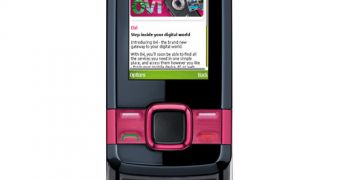
 14 DAY TRIAL //
14 DAY TRIAL // 


